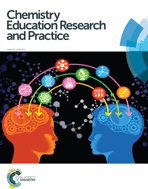Enhancing the transition? – effects of a tertiary bridging course in chemistry
Abstract
Preparatory or bridging courses are widespread and have a long tradition at universities. They are designed to increase students’ academic success – in particular of students with low prior knowledge – and to reduce dropout rates. However, critics of these short and compact bridging courses complain that preparatory courses are not able to fill in content gaps sufficiently in a few weeks. Despite the high prevalence of university bridging courses, little is currently known about the sustainable learning efficacy of these courses. The aim of this study was to examine the short- and long-term effects of a traditional chemistry bridging course on students’ success in the end of the semester examination of first-year chemistry students. For this purpose, students’ learning outcomes were analyzed at the end of the two-week bridging course of students with different prior knowledge. Furthermore, it was investigated in an intervention-reference-group design whether students’ exam results at the end of the first semester differ from participants of the bridging course and students who did not participate in the course. The results of the study reveal that students with low prior knowledge manage to close their content gaps in just a few weeks and to adjust differences in prior knowledge before starting their studies. At the end of the first semester, bridging course participants achieve significantly better exam results than their fellow students who did not enroll in the bridging course. However, mainly students with high prior knowledge seem to benefit from participating in the longer term. In the case of students with low prior knowledge, participation do not lead to better exam results compared to students without participation. Findings of the study can provide a basis for university teachers as well as university development experts to establish university bridging courses as well as to optimize existing offers.


 Please wait while we load your content...
Please wait while we load your content...